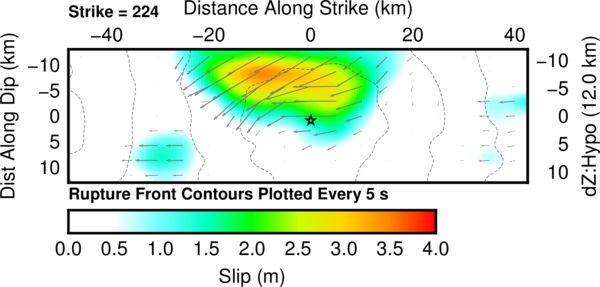M 7.0 - 6 km ESE of Kumamoto, Japan
- 2016-04-15 16:25:06 (UTC)
- 32.791°N 130.754°E
- 10.0 km depth
Finite Fault
- The data below are the most preferred data available
- The data below have been reviewed by a scientist
Scientific Analysis
Preliminary model; some waveform fits need improvement. However, NE directivity agrees with the distribution of strong shaking, and the orientation of regionally mapped faults (J-SHIS). Plotted fore- and aftershocks are from NEID, Japan.
Data Process and Inversion
We analyzed 45 teleseismic broadband P waveforms, 12 broadband SH waveforms, and 62 long period surface waves selected based on data quality and azimuthal distribution. Waveforms are first converted to displacement by removing the instrument response and are then used to constrain the slip history using a finite fault inverse algorithm (Ji et al., 2002). We begin modeling using a hypocenter matching or adjusted slightly from the initial NEIC solution ( location = 32.8°N, 130.7°E; depth = 12.0 km ), and a fault plane defined using either the rapid W-Phase moment tensor (for near-real time solutions), or the gCMT moment tensor (for historic solutions).
Result
This result is based on the moment tensor nodal plane ( strike = 224.0°; dip = 66.0° ). The seismic moment release based upon this plane is 4.7e+19 N-m (Mw = 7.0) using a 1D crustal model interpolated from CRUST2.0 (Bassin et al., 2000).
Cross-section of Slip Distribution

Surface Projection

Moment Rate Function


